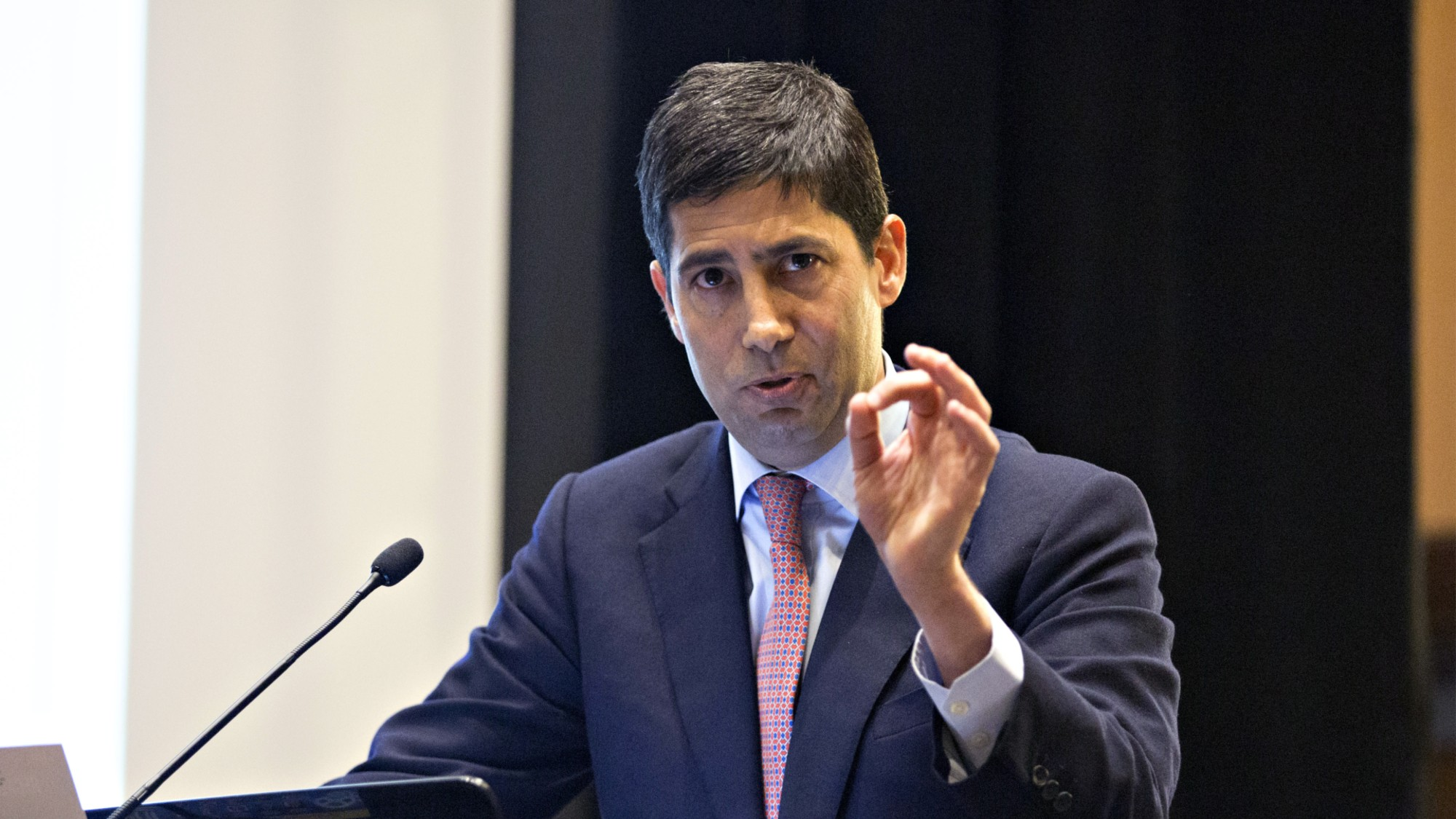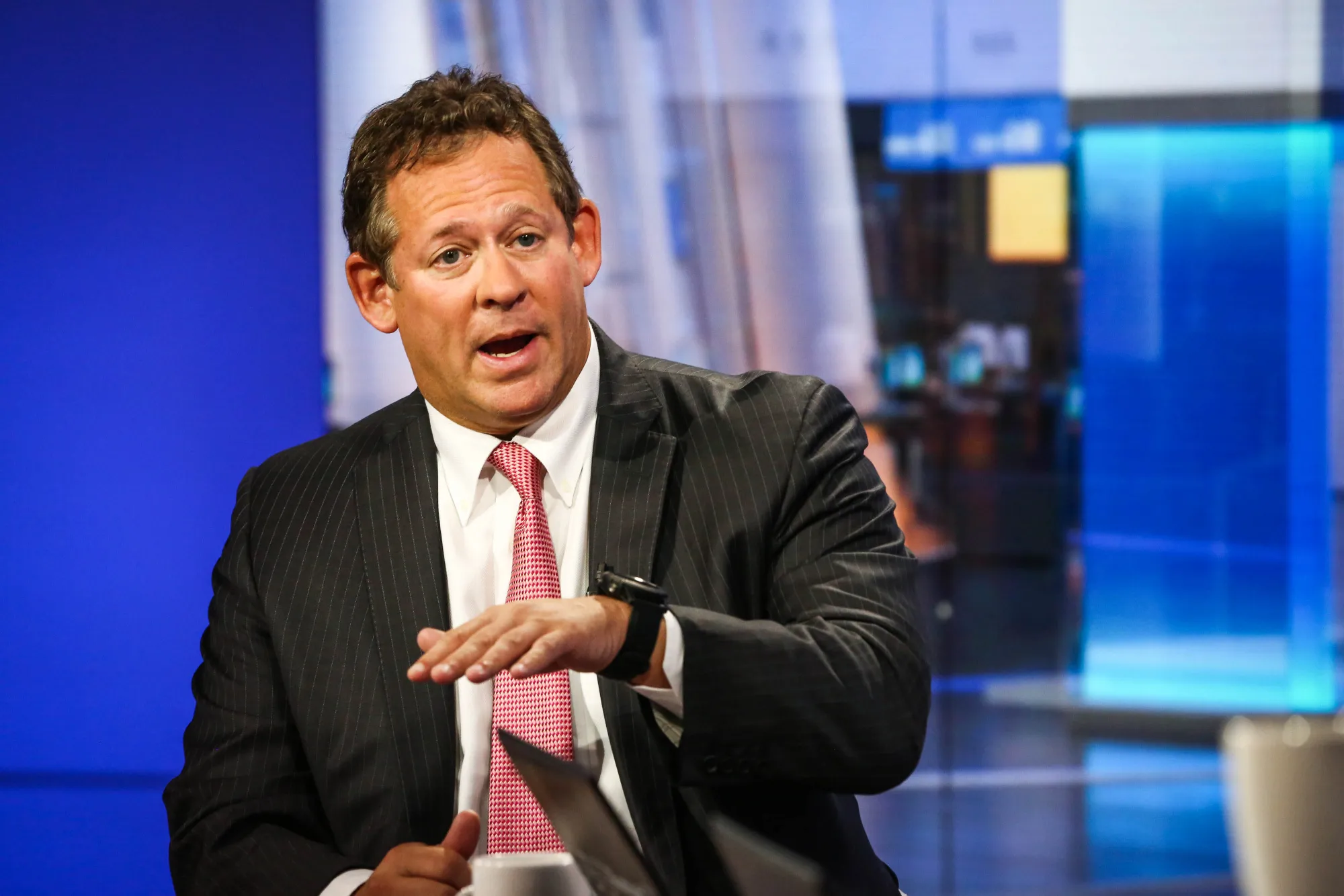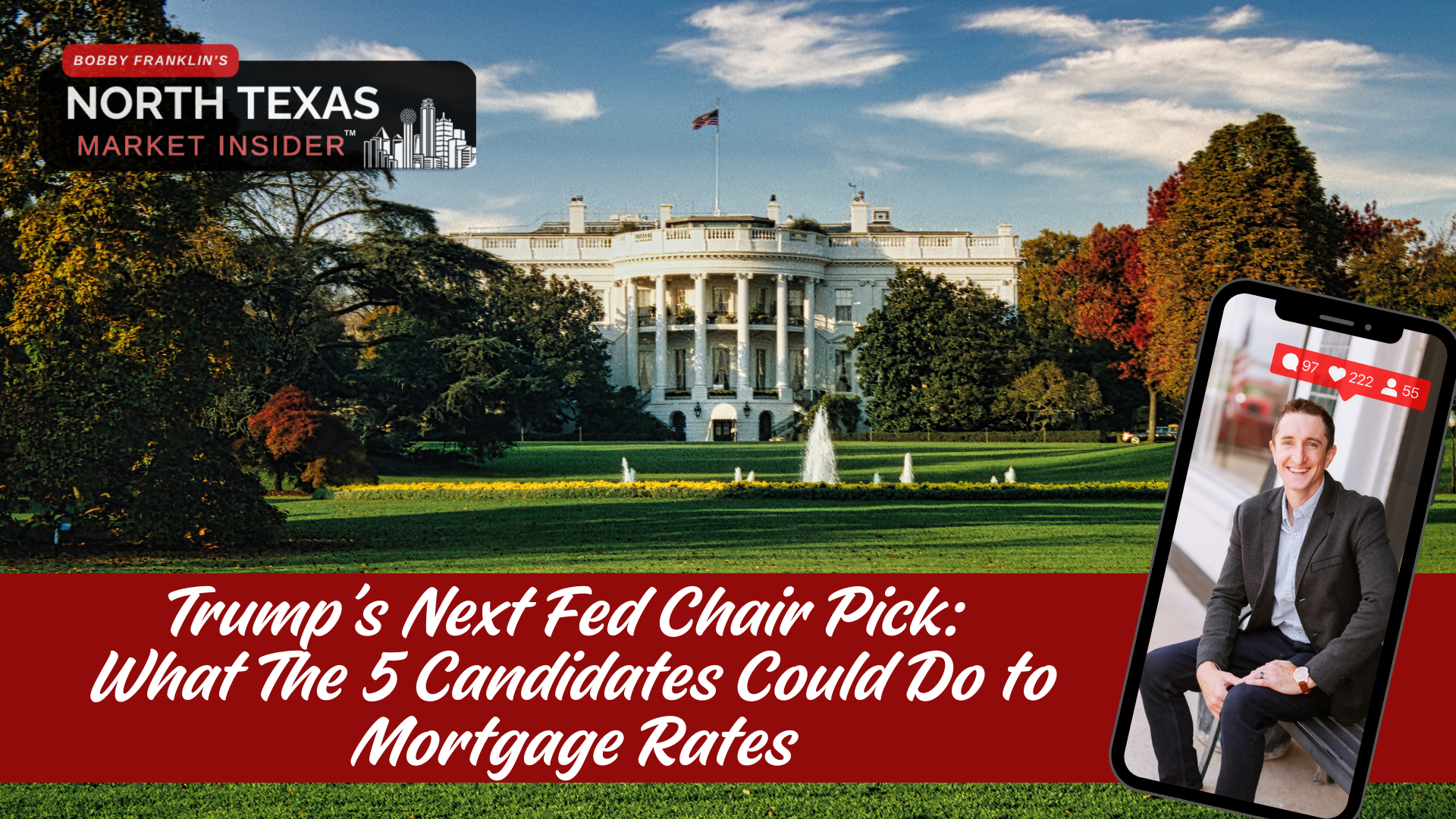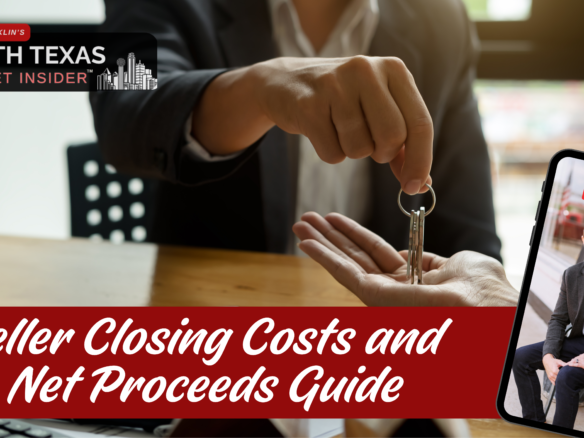The Five Candidates, What Each Means for Ellis County Home Buyers, and Why This Decision Matters More Than Any Interest Rate Announcement
Here’s something most North Texas real estate agents won’t tell you: the biggest factor determining your mortgage payment in 2026 isn’t listed in the MLS. It won’t show up in property disclosures. And it’s not something your lender can lock in for you today.
It’s a political appointment happening in Washington that could swing your monthly payment by $200-$300 on the same house, and most buyers have no idea it’s coming.
President Trump is expected to announce his Federal Reserve Chair selection by the end of 2025, with current Chair Jerome Powell’s term ending in May 2026. The shortlist has been narrowed to five candidates, and they represent dramatically different philosophies on monetary policy that will directly impact what you pay every month if you’re buying a home in Waxahachie, Midlothian, Red Oak, or anywhere across Ellis County and the DFW region.
This isn’t abstract economic theory. This is real money coming out of your checking account every month for the next thirty years. And right now, while everyone else is obsessing over listing photos and open house schedules, the smart money is watching Washington.
Let me break down exactly who these five candidates are, what their selection would mean for mortgage rates, and how you should be positioning yourself depending on which direction this goes.
The Five Candidates Who Could Determine Your Monthly Payment
Treasury Secretary Scott Bessent confirmed in October 2025 that Trump has narrowed the field to five finalists: Christopher Waller (current Fed Governor), Michelle Bowman (current Fed Vice Chair for Supervision), Kevin Warsh (former Fed Governor), Kevin Hassett (White House National Economic Council Director), and Rick Rieder (BlackRock’s Chief Investment Officer for Global Fixed Income). [1]
Each brings fundamentally different approaches to interest rate policy. And those differences translate directly to your wallet.
Christopher Waller: The Data Guy Who Wants Rates Lower Yesterday

Waller is interesting because he’s a Trump appointee who’s been serving as a Fed Governor since 2020, which means he represents institutional continuity. But here’s where it gets fascinating, Waller has recently become one of the most vocal advocates for immediate rate cuts, which puts him in the “dovish” camp despite his historical reputation as data-driven and hawkish.
In August 2025, Waller made waves by dissenting from the Fed’s decision to hold rates steady, arguing instead for a 0.25% cut. He’s been telling anyone who’ll listen that the labor market shows concerning weakness, going so far as to tell CNBC in October that “job growth has probably been negative the last few months.” [2]
What This Means for Your Mortgage: Waller’s approach would likely mean gradual, measured rate cuts over 12-18 months. He’s on record saying the neutral rate should be about 100-125 basis points lower than where we are now, which suggests he’d support bringing the fed funds rate down to approximately 3%.
For Ellis County buyers, a Waller-led Fed could translate to mortgage rates settling into the high-5% to low-6% range by late 2026, compared to the 6.3-6.5% rates Texas homebuyers are seeing today. That’s real money, on a $350,000 home purchase, the difference between a 6.5% rate and a 5.75% rate is approximately $175 per month, which adds up to over $63,000 in interest savings over the life of the loan.
Michelle Bowman: The Employment Hawk Who’s Fighting for Affordability

Michelle “Miki” Bowman serves as Vice Chair for Supervision, and she’s distinguished herself as pragmatic and focused on labor market health. Here’s what caught my attention: she and Waller dissented together in favor of rate cuts in July 2025, making them the first pair of Fed governors to dissent together in over thirty years.
That’s not random. That’s coordination. That’s a signal.
Bowman has consistently advocated for three rate cuts in 2025, citing “signs of fragility in labor market conditions” and arguing that the Fed should “take decisive and proactive steps” to prevent further deterioration. In an August 2025 speech, she made it clear she’s willing to tolerate slightly higher inflation if it means supporting employment. [3]
What This Means for Your Mortgage: A Bowman chairmanship would prioritize housing affordability through lower borrowing costs. She’s shown willingness to move faster than traditional Fed caution would dictate.
For North Texas homebuyers, this could mean faster rate reductions than under other candidates, potentially bringing 30-year fixed rates into the mid-5% range within 12-18 months of her appointment. On that same $350,000 home with 20% down, we’re talking about monthly payments in the $1,500 range instead of $1,675. That’s $175 per month that stays in your pocket for thirty years.
Kevin Warsh: The Inflation Fighter Who Wants to Shake Things Up

Kevin Warsh served as Fed Governor from 2006 to 2011, and he represents the most hawkish option on Trump’s shortlist. Warsh has been openly critical of current Fed policy, calling for “regime change” and arguing that the Fed has kept rates too high too long while running an oversized balance sheet.
Here’s his controversial proposal: the Fed should sell off its approximately $2 trillion in mortgage-backed securities (MBS) holdings. Warsh argues this would “quiet the printing press” and create room for lower short-term policy rates. But economists warn this approach could temporarily spike mortgage rates before eventually stabilizing them.
Warsh told Fox Business in July 2025: “We used to say that interest rate policy is housing policy, but we’re in a housing recession right now. First-time homebuyers are having a hard time getting a house. Thirty-year fixed-rate mortgages are closer to 7%.” [4]
What This Means for Your Mortgage: Buckle up. A Warsh tenure would likely create initial volatility. If the Fed begins aggressively selling MBS, mortgage rates could initially climb toward 7% before settling into the mid-6% range once markets adjust to reduced Fed intervention.
For North Texas buyers considering a $400,000 home purchase, this could mean temporarily facing monthly payments $210 higher than at 6% rates, an extra $75,746 in total interest over thirty years if you bought during the spike. However, Warsh proponents argue his disciplined approach would create long-term stability and prevent inflation from returning, which could mean more predictable rates for the duration of your loan.
This is the “short-term pain for long-term gain” candidate. Whether that’s the right approach depends on your timeline and risk tolerance.
Kevin Hassett: The Political Insider Who Says the Right Things About Independence

Kevin Hassett currently serves as Director of the White House National Economic Council, bringing strong economic credentials but limited central banking experience. His close relationship with Trump has raised concerns about Fed independence, though Hassett has publicly stated that Fed monetary policy “needs to be fully independent of political influence.”
The question isn’t what he says, it’s whether markets believe him.
Hassett has endorsed the Fed’s cautious approach to rate cuts, describing the September 2025 quarter-point reduction as “prudent.” But his willingness to align Fed actions with White House economic goals creates uncertainty about how independent the central bank would actually be under his leadership. [5]
What This Means for Your Mortgage: A Hassett-led Fed might pursue short-term rate cuts tied to growth priorities, potentially bringing mortgage rates briefly into the low-6% range and fueling a refinancing wave.
But here’s the catch, if bond market investors perceive erosion of Fed independence, they could demand higher term premiums, actually pushing long-term mortgage rates up even as short-term rates fall. This isn’t theoretical speculation. It happened after the Fed’s October 2025 cut, when mortgage rates climbed rather than falling.
For Texas buyers, a Hassett appointment creates the most uncertainty about mortgage rate direction. You could see rates drop quickly then spike just as fast if market confidence wavers. That volatility makes it harder to time purchases and refinances optimally.
Rick Rieder: The Wall Street Outsider Who Wants Rates at 3% Now

Rick Rieder is BlackRock’s Chief Investment Officer for Global Fixed Income and one of the most influential bond investors on the planet. He represents the most unconventional choice and has been the most aggressive advocate for immediate, substantial rate cuts.
Rieder has been saying loudly that current policy is “really hurting people” and making housing unaffordable. In October 2025, he told Yahoo Finance: “The market is screaming, whether it’s building permits, mortgage applications, or new-home sales, housing is hurting.”
He believes the Fed should move the policy rate to 3% and has suggested the Fed could use additional tools to manage the yield curve and bring down long-term rates, including mortgage rates. His deep understanding of mortgage-backed securities markets could lead to more fluid rate transmission between Fed policy and actual mortgage rates.
What This Means for Your Mortgage: A Rieder chairmanship could mean the most aggressive rate cuts of any candidate, potentially bringing mortgage rates into the mid-5% range within twelve months.
For a North Texas buyer purchasing a $400,000 home, a drop from 6.5% to 5.5% rates would save approximately $184 monthly, over $66,000 in total interest savings across the loan. That’s a new truck. That’s your kid’s college fund contribution. That’s real wealth building.
However, Rieder’s lack of central banking experience and close Wall Street ties raise questions about Fed independence and whether he’d prioritize financial market stability over Main Street housing affordability if those interests diverged. [6]
The Real-World Math: What This Actually Costs You Every Month

Let me translate this from Fed-speak into actual dollars that hit your checking account every month, using real North Texas home prices.
$300,000 Home (20% down, $240,000 loan):
- At 6% rate: $1,439/month
- At 7% rate: $1,597/month ($158/month more, $56,810 additional interest over 30 years)
- At 5% rate: $1,288/month ($151/month less, $54,198 interest savings)
$350,000 Home (20% down, $280,000 loan):
- At 6% rate: $1,679/month
- At 7% rate: $1,863/month ($184/month more, $66,278 additional interest)
- At 5% rate: $1,503/month ($176/month less, $63,231 savings)
$400,000 Home (20% down, $320,000 loan):
- At 6% rate: $1,919/month
- At 7% rate: $2,129/month ($210/month more, $75,746 additional interest)
- At 5% rate: $1,718/month ($201/month less, $72,264 savings)
These aren’t hypothetical numbers. These are the actual payment differences you’ll experience depending on which direction the Fed goes under its next chair.
The difference between a dovish chair like Rieder or Bowman who aggressively cuts rates versus a hawkish chair like Warsh who proceeds cautiously could determine whether you’re paying $1,500 or $2,100 monthly for the exact same house on the exact same street in Waxahachie.
Where North Texas Mortgage Rates Stand Right Now
As of early November 2025, current interest rates in Texas average 6.33% for a 30-year fixed mortgage and 5.79% for a 15-year fixed mortgage. These rates remain stubbornly above 6% despite two Fed rate cuts in 2025, because long-term Treasury yields have stayed elevated due to inflation uncertainty, tariff impacts, and the expanding federal deficit.
Texas housing inventory currently sits at 4.8 months of supply, approaching the six-month level that indicates a balanced market. Median home prices in key North Texas metros show varied conditions: Dallas median is $363,356 (down 3.9% year-over-year), while prices in Ellis County communities like Waxahachie continue showing relative strength compared to overheated markets like Austin.
Industry forecasts suggest mortgage rates will end 2026 between 5.9% and 6.4%, but these predictions assume continuity in Fed leadership. Trump’s Fed Chair selection could accelerate or delay this timeline significantly.
What Each Fed Chair Pick Means for Different Types of Buyers

Your optimal scenario depends entirely on where you sit in the real estate market right now.
First-Time Buyers in Waxahachie and Ellis County
If you’re a first-time buyer stretched thin on affordability, you’d likely benefit most from Rick Rieder or Michelle Bowman as Fed Chair. Both have explicitly emphasized housing affordability and would pursue aggressive rate cuts that could bring payments within reach faster.
Even a 0.5% rate drop could mean qualifying for a $20,000-$30,000 more expensive home with the same monthly payment. In Ellis County, where we’re seeing quality homes in the $275,000-$375,000 range, that difference could be the gap between settling for acceptable and actually getting what you need for your growing family.
Current first-time buyer challenges in North Texas include competition with investors, limited starter-home inventory, and payment-to-income ratios exceeding comfortable levels. Lower rates would ease all three pressures by improving qualification amounts, reducing investor cash-flow advantages, and stimulating new construction.
Move-Up Buyers Stuck with Low Rates
If you currently have a 3-4% mortgage from 2020-2021, you’re facing what economists call the “lock-in effect.” You need more space for the new baby or aging parents, but you don’t want to trade your low rate for a 6.5% mortgage.
For you, any candidate who brings rates below 5% matters, that’s the threshold where the rate differential becomes manageable enough to justify moving. Rieder represents your best hope for reaching that threshold quickly, while Warsh’s initial volatility could keep you locked in place longer.
The difference could be moving your growing family into needed space in 2026 versus waiting until 2027 or beyond. Sometimes the right move isn’t about optimal timing, it’s about living the life you need to live. But if rates drop enough to make the numbers work comfortably, that decision becomes a lot easier.
Investors and Cash Buyers
Real estate investors focused on cash flow and cap rates face different calculus. Lower rates benefit you by increasing buyer demand and property values when you’re ready to sell, but also intensify competition for acquisitions.
Waller or Hassett might offer the sweet spot, gradual cuts that sustain demand without creating frenzied competition that drives prices beyond profitable levels.
Additionally, lower rates reduce your cost of capital for portfolio expansion via cash-out refinances or HELOCs. A drop from 7% to 5.5% on a $500,000 investment property loan saves over $400 monthly, directly improving your cash-on-cash returns. For investors building portfolios in growing Ellis County markets, that’s the difference between mediocre returns and wealth-building velocity.
Current Homeowners Considering Refinancing
If you’re sitting on a rate above 6% right now, watch the Fed Chair selection closely. The general rule suggests refinancing makes sense when you can reduce your rate by at least 0.75-1%.
With current Texas rates at 6.33%, you need rates to drop to 5.5% or below to justify typical refinancing costs. Rieder or Bowman give you the best odds of reaching that threshold within 12-18 months. Warsh could paradoxically make refinancing harder initially if his MBS sales push rates up temporarily.
Calculate your break-even point carefully. If refinancing costs $4,000 and saves you $150/month, you’ll recoup costs in 27 months, meaning you need confidence rates will stay favorable that long.
The Questions Every North Texas Buyer Is Asking Right Now

Will mortgage rates drop to 3% again if Trump picks a dovish Fed Chair?
No. Let’s be direct about this, mortgage rates are highly unlikely to return to 3% levels seen during the pandemic. Those emergency rates resulted from unprecedented circumstances: the Fed dropping rates to near-zero combined with massive quantitative easing to stabilize the economy during COVID-19 lockdowns.
Even the most dovish candidate, Rick Rieder, advocates for a fed funds rate of 3%, not 0%. With inflation still above the Fed’s 2% target, returning to emergency-level rates would risk reigniting inflation.
Realistic best-case scenario: mortgage rates reaching the low-5% range by late 2026 if an aggressive dove like Rieder or Bowman takes the helm. That’s still significantly better than the 6.3-6.5% range we’re seeing today, but it’s not 2020 all over again.
Can the new Fed Chair directly lower mortgage rates?
The Fed Chair cannot directly control mortgage rates, but their influence is still massive.
The Fed sets the federal funds rate, which is the overnight rate banks charge each other. This influences short-term borrowing costs like credit cards and auto loans. Mortgage rates, however, correlate with the 10-year Treasury yield, which is determined by bond market investors assessing inflation expectations, economic growth, and risk.
That said, Fed policy profoundly influences these investor expectations. A dovish Fed Chair signals tolerance for lower rates, which typically drives Treasury yields down, bringing mortgage rates lower with them.
Here’s where it gets interesting: if investors lose confidence in the Fed’s inflation-fighting credibility, such as perceiving excessive political influence, they may demand higher yields despite Fed rate cuts, actually pushing mortgage rates up. This counterintuitive dynamic explains why mortgage rates rose after some recent Fed rate cuts. The market doesn’t always do what the Fed wants, especially if the market questions the Fed’s independence.
How long after the new Fed Chair takes office will mortgage rates change?
Markets often price in expectations before official policy changes occur. If Trump announces a clearly dovish candidate like Rieder in December 2025, mortgage rates could begin falling immediately, potentially before the new chair even takes office in May 2026.
This anticipatory pricing happened in September 2025, when mortgage rates dropped to 6.13% ahead of an expected Fed rate cut. Conversely, announcing a hawkish candidate like Warsh could cause rates to tick up in anticipation of tighter policy.
Once the new chair assumes the role, actual policy changes typically take 6-12 months to fully transmit through the economy to mortgage rates. The Fed meets approximately every six weeks to adjust policy, meaning even an aggressive new chair would implement cuts gradually across multiple meetings rather than all at once.
Should I wait to buy until after the new Fed Chair is announced?
This is the million-dollar question, and the answer depends entirely on your personal circumstances, local market conditions, and risk tolerance.
Reasons to wait:
- Potential rate drops of 0.5-1% if a dovish chair is selected
- Ability to refinance later if rates fall further
- Current elevated inventory in Texas giving buyers some negotiating power
Reasons to buy now:
- Home prices in Texas are forecast to stabilize or rise modestly in 2026
- “Lock-in effect” sellers may flood the market if rates drop, increasing competition
- You can always refinance later if rates fall significantly
Here’s my balanced take: if you’ve found the right home at a fair price, proceeding now makes sense. You can refinance if rates drop 1% or more, capturing future savings while avoiding the risk of rising prices or losing the property to another buyer.
Calculate whether potential rate drops justify delaying. Remember, a $350,000 home appreciating 3% annually costs you $10,500 in equity if you wait a year. That partially offsets interest savings from modestly lower rates. Sometimes trying to time the market perfectly means missing the opportunity entirely.
How will Trump’s Fed Chair pick affect home prices in North Texas?
Lower mortgage rates typically stimulate housing demand, which can push prices higher if supply doesn’t keep pace. However, Texas benefits from relatively responsive homebuilding that increases supply when demand rises.
Texas Real Estate Research Center forecasts predict single-family permits could increase 4% in 2026, with home sales rising 2% and median prices growing approximately 1.5% to $350,000 statewide. These projections assume modest rate declines regardless of who becomes Fed Chair.
A dramatically dovish chair accelerating rate cuts could amplify these trends, spurring faster price appreciation in desirable areas like Ellis County where land availability supports growth. Conversely, Warsh’s initially hawkish approach might temporarily suppress demand and keep price growth flat.
Regional variation matters significantly. North Texas submarkets like Waxahachie, with strong job growth and relatively affordable entry points, would likely see sustained demand across various rate scenarios. Overheated markets that saw massive pandemic-era appreciation might correct further before stabilizing.
Why This Matters More Than Most Agents Realize
Here’s what separates market intelligence from market noise: most agents in North Texas are focused on what’s happening right now, this week’s inventory, last month’s sales data, whether that listing should be priced at $349,900 or $354,900.
That’s not strategic thinking. That’s tactical execution.
Strategic thinking means understanding that a political appointment happening in Washington in December could swing your buyers’ purchasing power by $30,000-$50,000 by next summer. It means recognizing that the mortgage rate environment your clients will face six months from now is being determined right now by discussions most people aren’t paying attention to.
While everyone else is reacting to what already happened, the smart money is positioning for what’s coming next.
The five candidates on Trump’s shortlist represent fundamentally different philosophies about the appropriate role of monetary policy, the acceptable level of inflation, and the priority given to housing affordability. Those philosophical differences translate directly into your clients’ monthly payments, qualification amounts, and long-term wealth building.
Your Next Moves as a North Texas Home Buyer or Homeowner

The selection of the next Federal Reserve Chair represents one of the most consequential economic policy decisions affecting your real estate plans in 2026 and beyond. You can’t control who gets appointed, but you can prepare for various scenarios and position yourself to capitalize on opportunities.
For prospective buyers: Start getting pre-approved now to understand your current purchasing power at today’s rates. This baseline lets you quickly calculate how much additional home you could afford if rates drop after the new chair takes office. Monitor local North Texas inventory, particularly in growing areas like Waxahachie and Ellis County where supply increases may moderate price growth even if demand surges from lower rates.
For current homeowners: Calculate your refinancing break-even point at various potential rate scenarios. Know in advance what rate reduction would make refinancing worthwhile given your specific loan amount, remaining term, and refinancing costs. This preparation lets you act quickly if rates drop into your target range.
For sellers: Understand how Fed Chair selection might affect buyer demand and pricing power. If a dovish candidate is selected and rates drop, you’ll benefit from increased buyer activity and potentially stronger offers. If a hawkish candidate triggers temporary rate increases, be prepared with competitive pricing and compelling property presentation that attracts buyers despite rate headwinds.
Most importantly, don’t let uncertainty paralyze you. The Fed Chair will be selected with or without your input, but the timing of your personal real estate decisions remains entirely in your control.
The next 18 months will bring significant changes to mortgage rates and housing affordability in North Texas. The winners will be those who understood what was coming and positioned themselves accordingly, not those who waited for perfect clarity that never arrived.
While everyone else is watching the news trying to figure out what just happened, you’re going to be five steps ahead, ready to move when the opportunity presents itself.
That’s not luck. That’s strategy.
If you think you may be ready to purchase a home in North Texas check out my guide to home buying in NTX. (click the image below)

📊 Weekly market intel + insider opportunities
🎯 Text 214-228-0003 for the VIP list
Bobby Franklin – REALTOR®
Legacy Realty Group – Leslie Majors Team






Join The Discussion